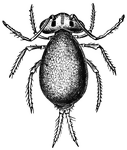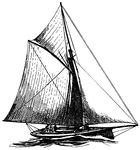
Sloop
"A small fore-and-aft rigged vessel with one mast, generally carrying a jib, fore-staysail, mainsail,…
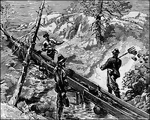
A Sluice Box - Miners Work in the Forest
"In mining, a trough made of boards, used for separating gold from the gravel and sand in which it occurs.…

Pulleys - Smeaton's Blocks
"A system of pulleys in two blocks, so arranged that the parts of continuous rope are approximately…

Smelting Furnace with Fire Burning
"A furnace in which metals are separated from their ores. a, fire-brick lining; b, masonry; c, opening…

Smew - A Merganser or Fishing Duck
Mergellus albellus. "A small merganser or fishing duck...The male in adult plumage is a very beautiful…
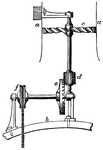
Smoke-Jack Used for Roasting Meat
"A machine for turning a roasting-spit by means of a fly-wheel or -wheels, set in motion by the current…
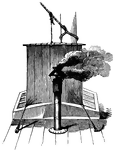
Smoke Sail
"A small sail hoisted against the foremast forward of the galley-funnel when a ship rides head to wind,…
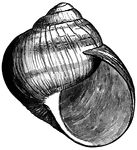
Roman Snail Shell
Helix pomatia. "A large-shelled, edible" snail, also called the Burgundy snail or escargot when used…
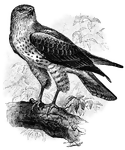
Snake Buzzard, Also Called a Short-Toed Eagle
Circaetus gallicus is a "bird of prey inhabiting all the countries bordering the Mediterranean, and…
Seneca Snakeroot - Stem and Flowers
"Polygala senega of eastern North America. It sends up several stems from hard knotty root-stocks, bearing…
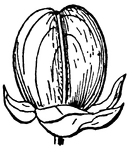
Seneca Snakeroot - the Fruit
"Polygala senega of eastern North America. It sends up several stems from hard knotty root-stocks, bearing…

Seneca Snakeroot - Roots and Base of the Stem
"Polygala senega of eastern North America. It sends up several stems from hard knotty root-stocks, bearing…
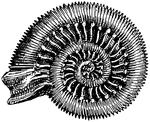
Snakestone - Ammonite
Ammonites bisulcatus. "Same as ammonite; from an old popular notion that these shells were coiled snakes…

Snipe Eel
"An eel-like fish, Nemichthys scolopaceus; any member of the Nemichthyidae. The snipe eel attains a…

Snotter
"A becket fitted round a boat's mast with an eye to hold the lower end of the sprit which is used to…
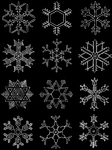
Snowflakes as Described by William Scoresby
"The aqueous vapor of the atmosphere precipitated in a crystalline form, and falling to the earth in…
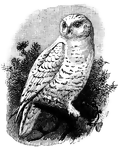
Snow Owl
Nyctea scandiaca." The great white or snowy owl, Strix nyctea or Nyctea scandiaca, inhabiting arctic…

Wing Snow Plow
"An implement for clearing away snow from roads, railways, etc. a, body of plow; b, caboose for implements…

Centrifugal Snow Plow
"An implement for clearing away snow from roads, railways, etc. a, caboose; b, cab; c, tender; d, show,…

Canadian Snow Shoe
"A contrivance attached to the foot to enable the wearer to walk on deep snow without sinking to the…

Golden Snuff Box from the 18th Century
"A box for holding snuff, especially one small enough to be carried in the pocket. When it was customary…

Silver Snuffers from the 18th Century
"An instrument for cropping the snuff of a candle, usually fitted with a close box to receive the burnt…
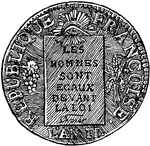
French Sou from 1793, Obverse
"Under Louis XV, and Louis XVI, the sou was struck in copper, and had an intrinsic value of two deniers…
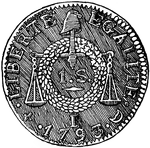
French Sou from 1793, Reverse
"Under Louis XV, and Louis XVI, the sou was struck in copper, and had an intrinsic value of two deniers…
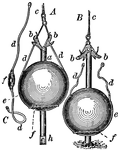
Brooke's Deep Sea Sounding Apparatus
"To measure the depth of; fathom; try or test, as the depth of water and the quality of the ground,…
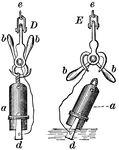
British Navy Sounding Apparatus
"To measure the depth of; fathom; try or test, as the depth of water and the quality of the ground,…
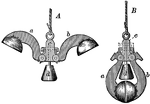
Taselli's Sounding Apparatus with Cups Opened and Closed
"To measure the depth of; fathom; try or test, as the depth of water and the quality of the ground,…

Sow Thistle - Stem with Heads, Basal Leaves, Flower, Achene with Pappus
"A plant of the genus Sonchus, primarily S. oleraceus, a weed of waste places, probably native in Europe…

Spades - a Collection of Various Types
"A tool for digging and cutting the ground, having a rather thick iron blade, usually flat, so formed…
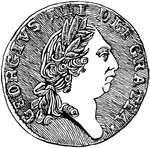
Spade Guinea Coined by George III, Obverse
"A guinea coined by George III during the period 1787-99. It is now so called because the shield of…
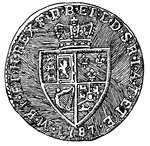
Spade Guinea Coined by George III, Reverse
"A guinea coined by George III during the period 1787-99. It is now so called because the shield of…
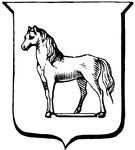
Spancelling of a Horse
"...hobbled or fettered to a clog; said of a horse. When the bearing is properly depicted, a fore and…
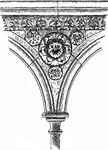
Sculptured Spandrel from Mont Saint-Michel
"...the triangular space comprehended between the outer curve or extrados of an arch, a horizontal line…

Dogtooth Spar
"...a variety of calcite, crystallizing in scalenohedral forms; so named from a fancied resemblance…

Sparada
"An embiotocoid fish of the Pacific coast of North America, Micrometrus aggregatus; a name also extended…
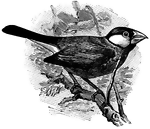
Java Sparrow on a Branch
Padda oryzivora. "...the rice bird of Java...about as large as the bobolink, of a bluish-gray color…
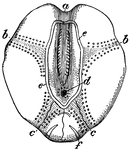
Sea Urchin - View from Above
Amphidotus cordatus or Echinocardium cordatum, commonly called a sea urchin, viewed from above. a, anterior…
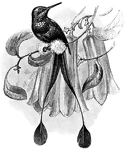
Racket-Tailed Hummingbird
Spathura underwoodi. The Spathura is a "remarkable genus of Trochilidae, containing hummingbirds with…

The Skull of a Paddle-Fish with the Beak Removed
"Skull of Spatularia, with the long beak removed, the anterior (asc) and posterior (psc) semicircular…

Spottail Minnow or Shiner
Notropis hudsonius. The spottail minnow, also called the spottail shiner is a spawn-eater. These fish…

Speaking Trumpet
"A trumpet-shaped instrument by which the sound of the human voice is reinforced so that it may be heard…

Hunting Spears from the 15th or 16th Century
"A weapon consisting of a penetrating head attached to a long shaft of wood, designed to be thrust by…
White Marlin, a Sailfish
Tetrapturus albidus. Also called a billfish or spearfish, "the dorsal fin is low or moderately developed,…

Spearmint Flower
"An aromatic plant, Mentha viridis, the common garden-mint, or mint proper. It is known chiefly in gardens,…

A Collection of Spectacles
"A, spectacles with bows hinged to the shoulders on the rims connected by the nose or bridge. B, spectacles…

Spectacled Bear
Tremarctos ornatus. "The only South American bear, having a light-colored mark on the face, like a pair…
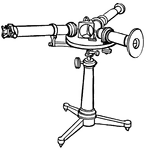
Prism Spectroscope from the Late 19th Century
"...a tube with a slit at the further end through which the light enters, and at the other end a collimating…

Direct Vision Spectroscope
"...an instrument which gives a spectrum when the source of the light is in a straight line with the…
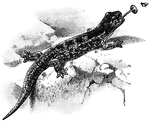
Red Salamander Eating an Insect
Spelerpes ruber. "...of a bright red color, more or less spotted with black, and is found in cold springs…
Human Spermatozoa
"One of the numberless microscopic bodies contained in semen, to which the seminal fluid owes its vitality,…
Spermatozoa of an Ape
"One of the numberless microscopic bodies contained in semen, to which the seminal fluid owes its vitality,…

Thirteen-Lined Spermophile, Also Called a Federation Squirrel
Spermophilus tridecemlineatus. Illustration of the most common of the Spermophilinae. "...having a number…

Sphaerozoum Ovodimare
"A genus compound radiolarians, typical of the family Sphaerozoidae, the protoplasm of which contains…
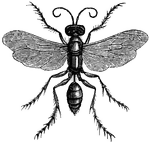
Spider Huntress Wasp
Chalybion caeruleum. "A family of fossorial hymenopters, or digger wasps. The prothorax is narrowed…
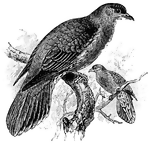
Kokla Green Pigeon
Sphenocercus sphenurus. The Kokla Green Pigeon, also called a Wedge-tailed Pigeon, "a genus of fruit…
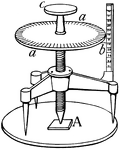
Spherometer
"An instrument for measuring the radii of spheres; a sphere-measurer. It is of especial service to opticians…
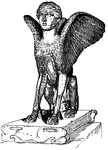
Sphinx of Lanuvium
A Graeco-Roman marble table support in the shape of a sphinx. It was found in the ruins of the Villa…
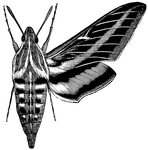
White-Lined Morning Sphinx
Deilephila lineata"...a common American moth of striking coloration, whose larva feeds on purslane."…
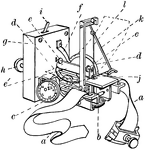
Sphygmograph with All Parts Labeled
"An instrument which, when applied over an artery, traces on a piece of paper moved by clockwork a curve…
